It seems this should be easy but I'm having a lot of difficulty using part of a texture with a point sprite. I have googled around extensively and turned up various answers but none of these deal with the specific issue I'm having.
What I've learned so far:
- Basics of point sprite drawing
- How to deal with point sprites rendering as solid squares
- How to alter orientation of a point sprite
- How to use multiple textures with a point sprite, getting closer here..
- That point sprites + sprite sheets has been done before, but is only possible in OpenGL ES 2.0 (not 1.0)
Here is a diagram of what I'm trying to achieve

Where I'm at:
- I have a set of working point sprites all using the same single square image. Eg: a 16x16 image of a circle works great.
- I have an Objective-C method which generates a 600x600 image containing a sprite-sheet with multiple images. I have verified this is working by applying the entire sprite sheet image to a quad drawn with GL_TRIANGLES.
- I have used the above method successfully to draw parts of a sprite sheet on to quads. I just cant get it to work with point sprites.
- Currently I'm generating texture coordinates pointing to the center of the sprite on the sprite sheet I'm targeting. Eg: Using the image at the bottom; star: 0.166,0.5; cloud: 0.5,0.5; heart: 0.833,0.5.
Code:
Vertex Shader
uniform mat4 Projection;
uniform mat4 Modelview;
uniform float PointSize;
attribute vec4 Position;
attribute vec2 TextureCoordIn;
varying vec2 TextureCoord;
void main(void)
{
gl_Position = Projection * Modelview * Position;
TextureCoord = TextureCoordIn;
gl_PointSize = PointSize;
}
Fragment Shader
varying mediump vec2 TextureCoord;
uniform sampler2D Sampler;
void main(void)
{
// Using my TextureCoord just draws a grey square, so
// I'm likely generating texture coords that texture2D doesn't like.
gl_FragColor = texture2D(Sampler, TextureCoord);
// Using gl_PointCoord just draws my whole sprite map
// gl_FragColor = texture2D(Sampler, gl_PointCoord);
}
What I'm stuck on:
- I don't understand how to use the
gl_PointCoordvariable in the fragment shader. What doesgl_PointCoordcontain initially? Why? Where does it get its data? - I don't understand what texture coordinates to pass in. For example, how does the point sprite choose what part of my sprite sheet to use based on the texture coordinates? I'm used to drawing quads which have effectively 4 sets of texture coordinates (one for each vertex), how is this different (clearly it is)?